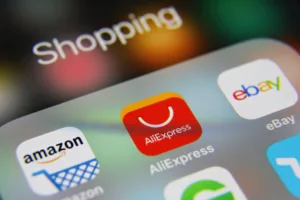By Phil Duffield, VP UK at The Trade Desk
Concern around data privacy and the upcoming cookie phaseout is rising at an increasing pace, leaving advertisers wondering how they will continue to deliver a high-quality consumer experience in what will be a new dawn for the sector.
However, amongst this uncertainty lies an opportunity for marketers to finally put data at the heart of their brand strategies. The phaseout of cookies will finally allow brands to deliver even more high quality, targeted and personalised brand communications to consumers, and doing so will require them to embrace the most valuable marketing asset they already have access to: first-party data.
First-party data allows marketers to have direct insight into how, when and what consumers engage with online. Beyond this, it can enhance a marketing strategy, increase effective targeting, reduce wasted spend and improve the consumer experience – with access to more relevant ads and without the expense of privacy. Here are three reasons why brands should take advantage of their first-party data in the cookieless future.
First-party data is the future
First-party data is the consented information brands collect directly from users that reveals online behaviours such as browsing habits, website activity and purchasing preferences. Any brand with an online presence can unlock this rich dataset to achieve its marketing objectives to help grow its business.
With the demise of cookies on the horizon, brands need a different way to understand how their target audience is behaving on the open internet. First-party data allows advertisers to be highly targeted in their placements and messaging with fewer and more relevant advertisements. However, advertisers must ensure this value exchange is clear and beneficial for consumers if they are to successfully deliver and take advantage of the power of first-party data.
Omnichannel, privacy-conscious strategies are key
Consumers don’t sit across only one channel – connected TV, audio streaming and mobile apps are just some of the ways consumers engage with content online. A key strategy for advertisers to spend their budgets effectively is therefore to understand where their audiences are across the open internet and unify that data for more accuracy and transparency.
This is why industry solutions like European Unified ID, or EUID for short, have been built for the benefit of advertisers, with consumers front of mind. It gives consumers control of their data through privacy notices and opt-outs. At the same time, advertisers can build holistic, omnichannel campaigns that reach consumers across the fastest growing digital channels on the open internet – making it a solution that works for everyone.
The power of personalisation
First-party data can help supercharge sales for brands as consumers trade their online behaviours for more relevant and personalised advertising. Consumers will see more of the ads related to the products they want or need to buy, and less of those that clearly aren’t relevant to them. In turn, brands can reach more customers across the right platforms at the right time, and measure what is and isn’t working in real time.
Brewdog is just one of many success stories of brands who have leveraged its first-party data. Brewdog was on a mission to drive maximum sales during key retail periods and beyond. It used its first-party data to understand which consumers were most engaged with the brand. Using that insight, Brewdog created interactive video ads that captured its target audience and delivered a great shopping and brand experience. The results speak for themselves: Brewdog was able to reach 88 per cent of the UK adult craft-beer drinking population – generating 10 times more sales than the original benchmark.
The potential of first-party data cannot be underestimated by advertisers – it brings clear advantages whilst maintaining customer consent and personalised insights. The key is to activate this data across all channels on the open internet to optimise placement, messaging and reach through fewer and more personalised advertising. As the future lies on the open internet, the time is now for advertisers to take full advantage of their first-party data.









